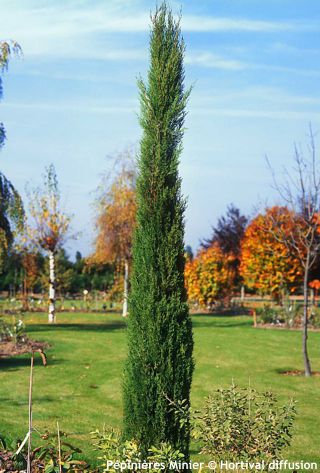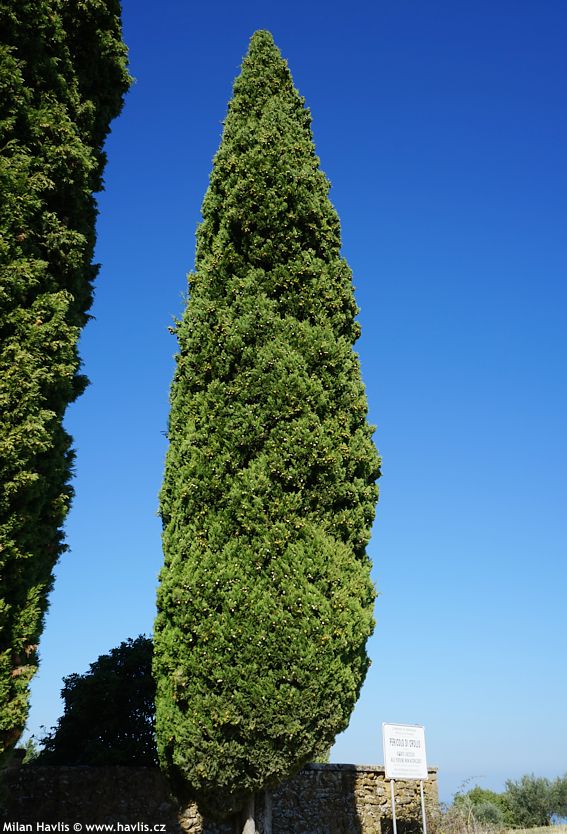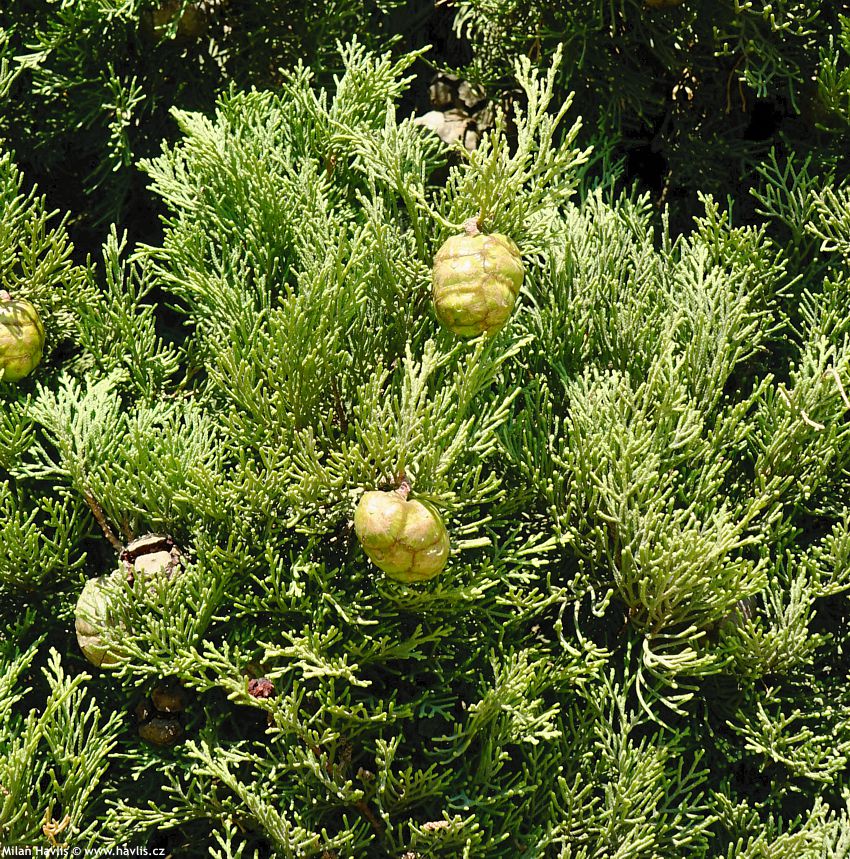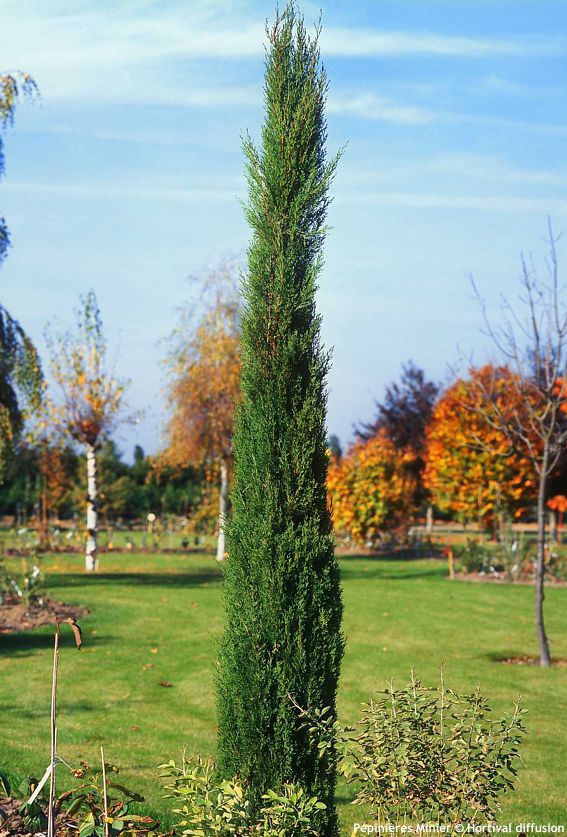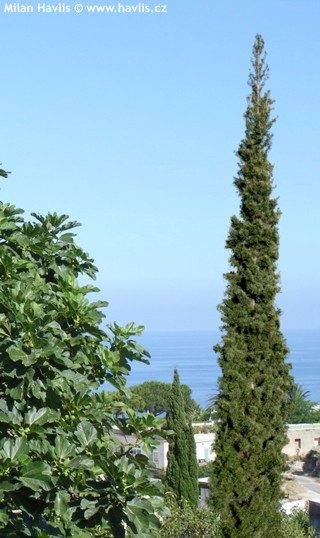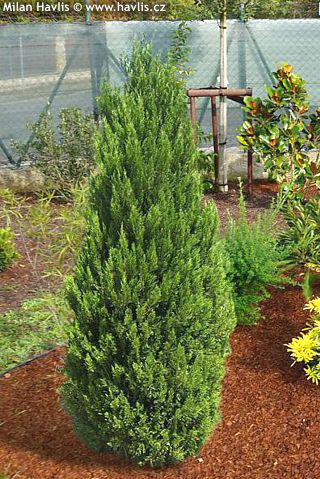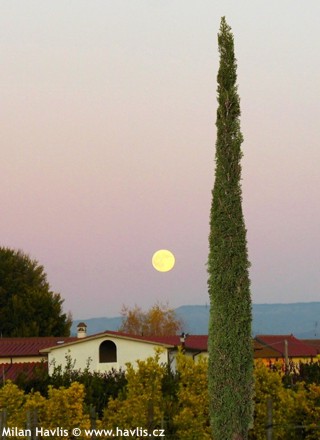Cupressus sempervirens 'GARDA' Mediterranean cypress, Tuscan cypress, pencil pine


Cupressus
Mediterranean cypress is an evergreen tree widespread especially in the eastern Mediterranean, but its exact origin could not be traced even in the age of super-modern botany. It is a very long-lived tree, the oldest recorded specimen Sarv-e-Abarkooh located in Iran is estimated to be 4000 years old. It is an evergreen conifer with a dense habit, whose botanical form is rather broadly ovate. It was not until the rise of ornamental horticulture that columnar, more slender forms were selected. These became a typical feature of some landscapes, for example Italian region Tuscany hence its alternative name Tuscan cypress because there is no scene of the Tuscan countryside that could be considered complete without this slender exclamation mark. For many years, new cultivars have been selected or intentionally crossbred to offer a narrower, denser habit, or other advantages.
Garda is a selected form of Tuscan cypress found in the Italian Lake Garda region. It naturally forms slender, evergreen columns, whose dense branches are covered with dark green, scale-like needles that do not lose their colour even in winter. The branches are shorter, firmly attached to the trunk, and do not suffer from breaking under the weight of heavy snow. The tree produces small quantity 3-4 cm long female cones, which have a specific fragrance and do not exhaust the plant.
Thanks to its particularly slender form, the Garda cypress is used especially for Mediterranean landscape style to evoke the typical atmosphere of a sunny landscape and looks great either planted in sets of three or in a combination of tree different plants of opposite forms: vertical/slender + horizontal/flat + round.
In Europe, the evergreen cypress is naturally found in the so-called maquis (macchia) - a Mediterranean hardwood shrubland or woodland, where it is considered non-native, but easily adapted due to its requirements. Maquis consists of mostly evergreen plants which cover dry to heat-parched plains and mainly rocks with a minimum of good-quality soil and a limited supply of moisture. It can create deep roots between stones, where it searches for nutrients and some underground water, and it can absorb a lot of atmospheric moisture (especially at night and in the morning) thanks to its large leaf area. If we provide similar conditions in our gardens the plants will be satisfied.
Evergreen cypress will only grow in well-drained, dry to only slightly moist, preferably alkaline to neutral soil in full sun. In the absence of direct sunlight it will thin out. It is naturally narrow, but can be shaped, ideally at the end of winter after all frosts, or in the middle of summer. Never cut into old wood without needles. When planting mature specimens with a small root ball, stake it well as a support for the first 2-3 years. Limit watering only to the necessary time before it establishes. It is resistant to diseases and pests. It is suitable for only warm locations of Central Europe. Hardiness tested so far down to -18 °C (USDA zone 7).
Last update 28-02-2023

































